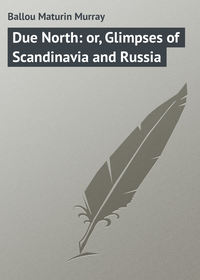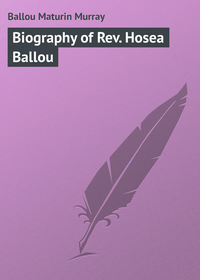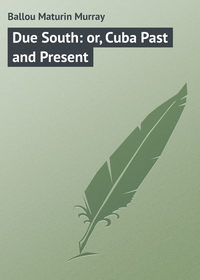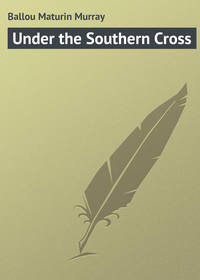 полная версия
полная версияThe Pearl of India
The charms of this island were well known in past ages. It is no new discovery of our day, as the earliest writers celebrated the pearls and gems of "Taprobane," and ornaments composed of its precious stones decked Asiatic queens of beauty twice ten hundred years ago. Ancient thrones were beautified by its sparkling sapphires, and the products of its spice-fields rendered fragrant the fires which burned upon the altars of pagan gods. The Greeks called it the "land of the hyacinth and the ruby." Primitive nomenclature is not only poetically descriptive, but is nearly always appropriate.
The island is very ancient in its historical relations. Its most famous capital is supposed to have been in its prime five or six hundred years before the Christian era, while some of its crumbling monuments belong to a much earlier age. It is confidently believed by many students of history to be the Ophir of the Hebrews; and the fact that it still abounds in rubies, sapphires, amethysts, garnets, and other precious stones, seems, in a degree, to corroborate this supposition. An intelligent estimate as to the aggregate value of the gems exported from Ceylon during the long past places it at so enormous a figure that we decline to give it in this connection, though fully realizing that the yield has been going on uninterruptedly for a period of two or three thousand years. But aside from this very attractive feature, it is, as a whole, the most beautiful island of the East, producing many other gems besides those of a mineral nature. "It is truly impossible to exaggerate the natural beauty of Ceylon," says the author of "The Light of Asia," and adds: "The island is, in fact, one prodigious garden, where the forces of nature almost oppress and tyrannize the mind, so strong and lavish is the vegetation." Marco Polo, who visited it in the thirteenth century, said that it was the choicest island of its size on the earth; and though, in the dim light of such information as was obtainable in his day, he made some grotesquely incorrect statements relating to the country, he was most certainly right in this superlative praise. He adds that the territory of Ceylon was much larger in former times than in his day, a great part of it having crumbled away and sunk into the sea. This is an important conclusion, with which our modern geographers are very ready to agree, though conjecture only can say to what extent it may have occurred.
As already mentioned, the arboreal and floral display is glorious beyond expression, forming a very paradise for botanists. Nature seems in this latitude to revel in blossoms of novel and fascinating species. Moisture and heat seek here an outlet to expand their fructifying powers. Situated in the path of the two monsoons, the southwest from the Indian Ocean, and the northeast from the Bay of Bengal, there is hardly a month of the year without more or less rain in Ceylon; vegetation is therefore always green and leafage luxuriant. In the jungle, large and brilliant flowers are seen blooming upon tall trees, while the eye is attracted by others very sweet and tiny in the prolific undergrowth, nestling among creepers and climbing ferns. In fact, the flora is endless in variety and intoxicating in fragrance. Perfume and bloom run riot everywhere. It would be vain to attempt an enumeration of the myriad examples, but memory is quick to recall the charming pitcher plant, the lotus, – its flower eight inches in diameter, – the yellow jessamine, the gorgeous magnolia, with innumerable orchids in their perfection of form and color, not forgetting the orange-hued gloriosa, and the beautiful vine bearing the wild passion-flower. There is also the large pearl-hued convolvulus which blossoms only at night, known in Ceylon as "the moon flower," and conspicuous through the dimness by its radiant whiteness. Many of the orchids exhibit a most singular similitude to animals and beautiful birds in their unspeakable and sweet variety. At first sight, a collection of them strikes one like a bevy of gorgeous butterflies and humming-birds, flitting among the green leaves. It seems as if Nature had created them in one of her happiest and most frolicsome moods, – "so true it is," says Macaulay, "that Nature has caprices which Art cannot imitate." Occasionally the senses are charmed by the fragrant, yellow-flowered champac, held sacred by the Hindus, from the wood of which the small images of Buddha are carved for the temples. Here, too, we have the odorous frangipane, the flower which Columbus found in such abundance on first landing in Cuba. Was it indigenous, one would like to know, in both of these tropical islands so very far apart? It is a tall plant, with few branches except at the top, but having fleshy shoots with a broad-spread, single leaf. The sensitive plant, which is such a delicate house ornament with us, fairly enamels the earth in this island, growing wild from Adam's Peak to Point de Galle, multiplying its dainty, bell-like pink blossoms, mingled with the delicate feathery acacia. Growing so exposed, and in weed-like abundance, it is natural to suppose that it would become hardened, as it were, to rough usage; but it is not so, as it retains all its native properties, in exaggerated form, if possible. Our puny little hothouse specimens are not more delicate or sensitive to the human touch than is this Ceylon mimosa. It is the most impressible of all known plants, and is appropriately named. Curious experiments prove this. If a person will fix his eyes upon a special branch and slowly approach it, the plant is seen gradually to wilt and shrink within itself, as it were, before it is touched by the observer's hand. It is endowed with an inexplicable intelligence or instinct, and what appears to be a dread as regards rude contact with human beings. A few years since, the author was at Cereto, in the island of Cuba, where he was the guest of an English physician who was also a coffee planter. While sitting with the family on the broad piazza which formed the front of the bungalow, a thrifty sensitive plant was recognized and made the subject of remark. The doctor called his young daughter of eleven years from the house.
"Lena," said he, "go and kiss the mimosa."
The child did so, laughing gleefully, and came away. The plant gave no token of shrinking from contact with the pretty child!
"Now," said our host, "will you touch the plant?"
Rising to do so, we approached it with one hand extended, and before it had come fairly in contact, the nearest spray and leaves wilted visibly.
"The plant knows the child," said the doctor, "but you are a stranger."
It was a puzzling experience, which seemed to endow the mimosa with human intelligence.
One brings away especially a vivid memory of the brilliant scarlet and golden bloom which covers the flamboyer so densely as almost to hide from view its foliage of velvet green. Only in far-away, mid-ocean Hawaii does the traveler see this gorgeous tree so perfectly developed.
The former superintendent of the Royal Botanical Gardens near Kandy, whither we shall take the reader in due time, is a scientific botanist, and an enthusiast in his profession. He tells us that he classified nearly three thousand indigenous plants, which is double the flora of Great Britain, and about one tenth of all the species in the world yet described. Thirty of these are declared to be found only upon this island. If correct, this is certainly a very remarkable fact, and forms an additional incentive for exploration on the part of naturalists.
Any reader of these pages who can conveniently visit Cambridge, Mass., should not fail to enjoy the unique and comprehensive collection of specimens representing the flora of Ceylon, now in the Agassiz Museum. The material is glass, although it seems to be wax, but so perfectly has the work been done, under direction of Professor George L. Goodale, of Harvard College, as to be indeed realistic. We have called this collection unique, and it is absolutely so. Bostonians can find no more charming local attraction with which to entertain appreciative visitors from abroad than this in the department of botany at the institution named.
There is a constant unvarying aspect of green pervading the scenery of Ceylon, owing to the perennial nature of the vegetation. The trees do not shed their leaves at any fixed period of the year. The ripe and withered foliage drops off, but it is promptly replaced by new and delicate leaves, whose exquisite hues when first expanding rival the blossoms themselves in beauty of color. If fruit is plucked, a flower quickly follows and another cluster ripens, – Nature is inexhaustible. There is no winter interval or sleep for the vegetation, no period of the sere and yellow leaf, as with us in the colder north. The fruits and flowers are ever present, yet there is a certain resemblance to spring and autumn, as we are accustomed to see them. The shrubs and trees are decked more or less with young fresh leaves at all times, while the ground is strewn with those in a state of decay which have ripened and faded out of life. The latter with us are the harbingers of winter, the former coming only with the opening spring. Thus it is that we call it the reign of eternal summer, for all out-of-doors seems like a conservatory of choice flowers and birds of dazzling hues. Although these highly colored creatures of the feathered tribe, like the butterflies, are almost innumerable, one is forced to admit that there are few sweet songsters among them. Paroquets in mottled green, practicing their dainty ways, present themselves in flocks, lighting upon the nearest bushes and branches with a winning fearlessness and confidence. They will slip quietly away if one attempts to catch them, but when taken young they are easily domesticated, accommodating themselves to human associations with the utmost facility, and though they are left free to seek the woods and jungle when they choose, they are sure to return voluntarily to the cabins of the natives, to be fed and petted by human hands.
One variety of the green paroquet has a curious rose-colored ring about its neck, like the turtle-dove, so delicate and uniform as to seem almost artificial. The natives call it the love-bird. The youthful Singhalese women, like those of Japan, take great pains in the arrangement of their ebon-black hair. It was a unique and very pretty sight observed one day in the native district of Colombo, when a pair of live paroquets' heads, forming the apex to a native woman's abundant coil, were seen coquettishly twisting and turning hither and thither. The little beauties were quite content, perched up there amid their mistress' wealth of tresses. They were hardly confined, though their bodies were laid cosily beneath the braids as though resting in their native nest. What a field this tropical isle would have been for Audubon!
One often sees hovering about the gardens and bungalows a little bird as large as an English sparrow, called the Ceylon bird of paradise, but which does not deserve that name. It has a black head, a neutral-tinted body, and a long tail, five times the length of its body, consisting of pure white feathers. Its only marked peculiarity, so far as is apparent, consists in its singular and disproportionate tail. It has a little fretful, discordant twitter, but no connected notes. The Singhalese name for the bird escapes us at this writing.
Ornithologists make out a list of over three hundred distinct species of birds in Ceylon, among which the largest variety is found in the parrot family, very nearly equaled by the wading and aquatic tribes.
CHAPTER III
The Wearisome Tropics. – Waterspouts. – Climatic Conditions. – Length of Days. – A Land Rich in Prehistoric Monuments. – History and Fable. – Last King of Ceylon. – Ancient Ruins. – Aged Cave Temples. – Gigantic Stone Statue of Buddha. – French Vandals. – A Native Chronicle. – Once the Seat of a Great Empire. – System of Irrigation. – Mysterious Disappearance of a Nation. – Ruins of a Vast City. – Departed Glory. – The Brazen Palace. – Asiatic Extravagance. – Ruined Monument.
The author had been expressing a sense of hearty appreciation, on a certain occasion, in a domestic circle at Colombo, as to the perennial character of the vegetation, together with the endless variety of fruits and flowers in this favored land, but it appeared that those who had adopted it as their home did not find it to be absolute perfection. There is no terrestrial paradise; there was never a golden age; both of these figures of speech are born of poetical license: but to the traveler who recalled for a moment the ice-bound aspect and chilling snow of his New England home which must have prevailed at that moment, the contrast which surrounded him here had a magic charm.
"It seems almost like heresy to say so," remarked the cultured and amiable wife of our host, an English official, "but one does sometimes weary of the sameness in the verdure of the tropics, lovely as it is, while remembering with a sigh the beautiful, varying autumn and the joyous springtime of more northern regions. Here we are always upon a dead level, so to speak; no contrasts present themselves. Eternal summer palls upon one. Perpetual youth in the vegetable kingdom," she added, "seems as unnatural and undesirable as it would be in human life. We have no winter, spring, or autumn in our Ceylon calendar."
The equable and fruitful climate of the island is not produced, as is the case upon the west coast of California, by the influence of the ocean. There the Kurosiwo or Japanese current, which closely follows the trend of the land like a mighty river, with a constant temperature resembling the Gulf Stream of the Atlantic, and a width of five hundred miles, makes a semi-tropical climate of a latitude which is often Arctic farther inland. Its equatorial situation alone endows Ceylon with endless summer.
It is curious to observe how the nature of some plants and trees is changed by transplanting them hither, and the same is also remarked of the average individual who has come from other less genial lands to settle in an equatorial climate. If it proves to be a healthy one, he takes very kindly to the delightful do-nothing of such a region, together with its lazy, sensuous enjoyments, losing in a large degree the energy and ambition naturally developed among the people of the north. The moral is obvious. He who runs may read. It requires a colder clime, with a soil not too willing, to awaken human energy, and to place man at his best. Luxury enervates; necessitous labor strengthens.
Fruit-bearing trees transplanted from the United States, such as peach, cherry, and pear trees, have in many instances ceased to produce fruit, and have become partial evergreens. Experiments with grapevines from northern climates have met with similar results. In nearly the same latitude, however, though in opposite hemispheres, the transplanting of some fruit trees, and especially of the vine, seems to impart fresh life and fruitfulness. Those brought from France and Italy put on new vigor when they are domesticated on the Pacific coast of this continent; while the mission grapevine and others native in California, exported thence to the countries named, flourish marvelously and produce abundantly. At this writing, news comes to us of the partial failure of the grape crop in some of the vineyards of southern France, and also that, following out the results of late experiences, the old vines are to be replaced by the introduction of California varieties. The grapevine does not seem adapted to tropical climes. It is not a perennial growth, but must enjoy its long winter rest in order to thrive. Even in mild, equable southern California, its fruit-bearing branches are cut back annually to the main stalk, where the principal life is stored. The new branches of the mission grape, as it is called in this region, produce bunches of the luscious fruit yearly, which often weigh four and five pounds each; but as we have said, the new growth is cut away every year after fruiting.
Checking the vagrant inclination of pen and brain to travel afield, let us turn to matters more relative to the expressed purpose of these pages.
The island of Ceylon is favorably situated outside the region of the cyclones which so frequently prevail in the Bay of Bengal and the neighboring ocean, while it is also free from the hurricanes of the Mauritius Sea and the volcanic outbursts of the Eastern Archipelago. There is no evidence of seismic disturbance in this region, either past or present. One does not leave waterspouts entirely behind in the Gulf of Siam, on reaching the shore of this island. Just before the season of the monsoons, they appear sometimes off this coast. They are never, however, of a fierce, whirlwind character, so as to cause any serious harm.
As regards climatic conditions, the coolest season of the year is during the prevalence of the southwest monsoons, or from the end of April to the end of October. The northeast monsoon is of shorter duration, prevailing during November, December, January, and February. Both these periods are ushered in by heavy thunder-storms and a liberal downpour of rain. The reader who has never experienced an equatorial land-storm has no conception of the fury of the elements under such circumstances. The continued blaze of the fiery lightning and the deafening crash which echoes through the skies are beyond description. Timid people try to hide themselves in the dark corners of the bungalows, while even the natives and animals often become tremulous with fear. It must be admitted that fatal accidents are frequent enough during these thunder-storms to keep an apprehension of danger constantly alive. In the mountain regions about Kandy and Ratnapura, where the echoes supplement the grand electric discharges, the deafening noise and reverberation can only be compared to the quick, sharp, detonating reports of heavy artillery. The monsoons occur with the utmost regularity, both here and over a large portion of the neighboring continent, and they are so regular that their arrival can be calculated upon nearly to a day. Electrical phenomena, thunder and lightning, are, as just intimated, often very grand. So, also, is the prevalence of optical displays, such as rainbows and mirage. As to moonlight nights and their dazzling exhibitions, like those of the tropical regions generally, words are inadequate to express their splendor, at once so brilliant and so calm.
The climate is very much like that of Java, humid and hot, especially in the southern portion nearest to the coast; it is, however, considerably more moderate than that of the mainland of India. Although so very warm, it is equable; one is aware of what to expect and can prepare for it. Occasional frosts occur in the highlands, but snow is unknown even on the mountain tops. The length of days, owing to the proximity to the equator, does not vary more than one hour, the sun setting at Colombo at about six o'clock all the year round. At Dondra Head, the extreme southern point of Ceylon, the difference between the longest and shortest day of the year is only forty minutes.
This interesting island is rich in prehistoric monuments, Buddhist temples, and lofty dagobas, some of which were originally over three hundred feet in height, exceeding that of the Cathedral of Notre Dame, in Paris, by sixty feet. This, be it remembered, was representative of a civilization which existed upon an island of the Indian Ocean between two and three thousand years ago. The lofty, gorgeous colored, and eccentric temples which the traveler regards with such curious interest in India belong to a much more modern period. They are structures which have been raised oftentimes upon the site of former heathen shrines. So in Rome, many of the churches which we visit to-day and accredit with great antiquity are rebuilt upon edifices formerly dedicated to strange gods. Some remain intact, like the Temple of Hercules and the Pantheon. These Ceylon dagobas are only one class of monuments, and are to be considered in connection with other vestiges of vast public structures, the origin and purpose of which have been lost sight of in the lapse of ages. Slabs of granite engraven with half-effaced inscriptions in Pali, and in unknown characters, are still found, mystifying the most learned antiquarians, while the significance of others has been made plain by means of commendable patience and scholarly acquirements. What an object lesson is here presented, attesting the evanescence of all mundane power and glory. Here are evidences of vast and costly enterprises, such as the rearing of grand monuments whose legitimate object can only be conjectured, and the names of whose builders are forgotten. The annals of the Singhalese, to whom we are not accustomed to give much credit as a literary people, yet afford consecutive historical data for twenty-four centuries back, though, as in most oriental countries, the records of their past combine truth and fable almost indiscriminately, so that it is often difficult to distinguish one from the other. These Eastern writers had a royal mode of assertion, much more impressive than convincing; as regards the general fidelity of these annals, however, there is no reasonable doubt, after allowing for what may be termed poetical license of expression. We may well ask ourselves how many lands can, like Ceylon, tell so much of their past history in authentic records verified by enduring monuments. As is well known, we in America go back only about four centuries before the trail of history is lost. To be sure, conjecture is abundant enough, but conjecture is not history.
Compared with the probable age of the globe, how quickly history fades into fable! Agassiz thought this to be the oldest country of which we have any reliable knowledge. The Western mound builders were undoubtedly a distinctive race, yet who can tell their story? The mysteries of Yucatan are unsolved. There was a civilization once existing in Peru whose history is to us a blank. Of the origin of the Sphinx, older than the Pyramids, what do we really know? On Easter Island, in the South Pacific, are indestructible evidences of an ancient people, who possessed a written language so old that no one can decipher its admirably graven characters. Where did that island come from, and what became of its people? Were they and their country submerged, like another Atlantis, and is this island the apex of a mountain range left above the devouring ocean to tell the tale? This is not a wild supposition. It has been suggested and declared possible by more than one astute and scholarly writer upon physical geography. As to antiquity, the monuments of Egypt enable us to trace back the history of civilized man only six thousand years, though all intelligent archæologists know that the earth must have been inhabited by human beings an infinite number of years prior to that period. Philology and geology are sufficient to prove this.
Singhalese annals record in detail the reign of one hundred and sixty sovereigns during a period extending from the conquest of the island, b. c. 543, by Wijaya, a prince from northern India, to the deposition of Wikram Raja Sinka by the English in 1815. This was the last king of Kandy, the then native capital of Ceylon. Sufficient is recorded of the personal character of Wijaya, the early conqueror of the island, to prove his utter barbarity, so that we are naturally led still more to wonder whence came the artists – for artists they were – who designed and built such cities as Anuradhapura and Pollonarua, the first of which was probably founded during his reign. Either the Singhalese as a race must have retrograded in a most marvelous manner, while other nationalities were in the line of progress, or foreign artists and builders must have been imported to rear such grand and beautiful capitals in this Indian isle. Does the reader realize that our best architects to-day go back for suggestions to the elaborate and elegant ornamentations which prevailed at this period in stone columns and lofty façades? Though scarred by warfare with the ages, these still form rare and choice object lessons to the appreciative artist.
Among the remarkable evidences of great antiquity in Ceylon, we recall the elaborate cave-temples of Dambula, hewn out of the primitive rock, and which have existed at least two thousand years, representing an infinite amount of patient labor, which must have been executed with tools admirably adapted to the purpose assigned. The principal temple – there are four of them – was dedicated to Buddha, whose creed is still the prevailing faith of Asia, – a doctrine ages older than our so-called Christian religion. The entrance to the principal cave-temple is elaborately carved in the solid stone, and is wonderfully well-preserved. The design is harmonious with the purpose, presenting a score or more of figures in bas-relief, with embellishments appropriate to the Buddhist faith. Two mammoth figures, one on either side, represent, probably, guardian spirits or gods. Just within, there is an altar with a sitting figure of Buddha, opposite the entrance. It is interesting to note the ornamental entrance to the temple, as exhibiting the degree of artistic appreciation which existed here in Ceylon between two and three thousand years ago. This largest temple is one hundred and eighty feet long, eighty wide, and twenty-five high, a gloomy vault at best, containing a gigantic recumbent stone statue of Buddha, forty-seven feet in length, the head resting on the right hand, indicating repose, one of the favorite positions in which the prophet is usually represented in the temples of Ceylon. The chambers or halls, which are hollowed out of the rock, are reached by long flights of stone steps. Each temple is most grotesquely painted with scenes supposed to represent the past history of the island. In the first of the caves is the immense statue already spoken of. In the others are those of ancient kings in heroic size, but not nearly so large as that of Buddha. On the several walls are rudely-painted tournament scenes, elephant hunts, and half-effaced battle pictures. Some of the apartments have iron-grated windows, and were evidently places of confinement for political prisoners, some time in the far past. An old Buddhist priest is in charge, grumpy, reticent, and apparently dissatisfied with himself and the world generally. In the first and largest of the stone chambers of this huge rock at Dambula, besides the large recumbent figure of Buddha, there is a statue of Vishnu, held especially sacred, and before which solemn oaths in litigated cases were administered, without any other recourse for settlement. This was when one of the parties agreed to abide by the solemn oath of the other, to be given in specified form before this statue of Vishnu. It is a rudely executed figure in granite, as indeed are all the statues of the period. In the second chamber or temple there are half a hundred statues of Buddha, besides representatives in stone of various heathen gods, painted in yellow, blue, and white robes, but why the multiplicity of Buddhas it would be difficult to divine. In front of the cave-temples is a flourishing boo-tree, and a small grove of cocoanut palms which have grown to a great size. As usual, centuries of age are claimed for the first-named tree. Round about the plain, among the rude, wild vegetable growth, a peculiar cactus is seen, a familiar acquaintance, first met with on the plains of Mexico. Its thick leaves form also its branches, each leaf being attached to its neighbor endwise, like links of a chain, and being bordered by a bright yellow ruffle of profuse blossoms. These cave-temples of Dambula are cut in a solitary mass of rock, rising from the otherwise level plain to about five hundred feet in height and four times that in length. This is undoubtedly the most remarkable group of cave-temples upon the island.









